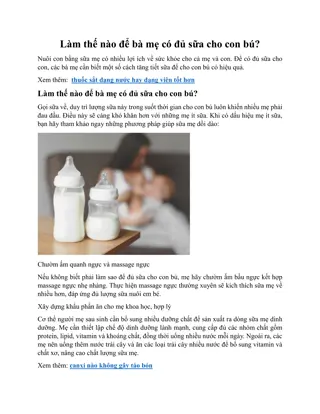Understanding the Management of Natural Resources by Dr. Sadhna Tyagi
Natural resources are essential for life, with renewable resources like air and water, and non-renewable resources like minerals. Conservation efforts like the Three Rs (Reduce, Recycle, Reuse) and proper management are crucial due to increasing demand and limited availability. Forests play a vital role in biodiversity, ecological balance, and human livelihoods. Dr. Sadhna Tyagi emphasizes sustainable practices for the preservation of our natural resources.
Download Presentation

Please find below an Image/Link to download the presentation.
The content on the website is provided AS IS for your information and personal use only. It may not be sold, licensed, or shared on other websites without obtaining consent from the author. Download presentation by click this link. If you encounter any issues during the download, it is possible that the publisher has removed the file from their server.
E N D
Presentation Transcript
MANAGEMENT OF NATURAL RESOURCES Dr Sadhna Tyagi Associate Professor Geography Department CRA College,Sonepat
1) Natural resources :- Natural resources are the resources available in a nature like air, water, sunlight, soil, minerals, forests, wild life etc. Natural resources are of two main types. They are renewable and non-renewable natural resources. i) Renewable natural resources :- Those resources which can be replenished in a short period of time like air, water, sunlight, forests etc. ii) Non-renewable natural resources :- Those resources which cannot be replenished in a short period of time like minerals (coal, petroleum, natural gas, metals etc.) because they take millions of years to be formed. Human activities produce a lot of waste materials which are thrown away into the environment. These wastes cause pollution of natural resources like air, water and soil.
2) The Three Rs to save the environment :- The three R s to save the environment are Reduce, Recycle and Reuse. i) Reduce :- means using less of natural resources and avoiding wastage of natural resources. ii) Recycle :- means the materials like paper, plastic, glass, metals etc used for making things can again be used for making new things instead of synthesising or extracting new paper, plastic, glass or metals. iii) Reuse :- means using things again and again like the plastic bottles in which we buy jams, pickles etc can be again used for storing things in the kitchen. RECYLED PAPER ARTICLES
3) Need for management of natural resources :- All the things we use and consume are obtained from natural resources. Due to increase in population, industrialisation and urbanisation the demand for natural resources is increasing and their availability is limited . So there is a need for proper management of natural resources. The proper management of natural resources consists of :- i) Judicious use of natural resources and avoiding wastage of natural resources. ii) Long term planning for the use of natural resources so that it last not only for the present but also for future generations. iii) The exploitation of natural resources should not be for the benefit of a few people but should be distributed equally for all. iv) While extracting and using natural resources we should also plan for the safe disposal of wastes so that no damage is caused to the environment.
4) Forests :- a) Importance of forests :- i) Forests help to preserve biodiversity. ii) Forests are natural habitats of plants and animals. iii) Forests provide timber, wood, fuel, medicines, fodder, etc. iv) Forests help to maintain ecological balance. v) Forests help to control climate and rainfall. vi) Forests help to prevent soil erosion and controls floods. vii) Forests help to maintain the oxygen carbon dioxide balance in nature. b) Stake holders of forests :- People who are associated with forests directly or indirectly are :- i) People living in and around forests depend on forests for their livelihood. ii) Industrialists who use the raw materials from forests for manufacturing paper, medicines, furniture etc. iii) Forest Department of the Government who owns the forests and controls the resources from the forests. iv) Nature and wild life organisations who want to conserve and preserve forests.
c) Conservation of forests :- Forests can be conserved by :- i) Afforestation planting of more trees. ii) Preventing or reducing deforestation. iii) Preventing over grazing by cattle. iv) By setting up wildlife sanctuaries, national parks, biosphere reserves etc. v) Undertaking social forestry programs like Van Mahotsav, Chipko movement for planting and protecting trees on a large scale.
5) Wildlife :- a) Importance of wildlife :- i) Wildlife helps to preserve biodiversity. ii) Wildlife helps to maintain food chains and food web. iii) We get useful products from wildlife like food, medicines, leather, bones, honey, lac etc. b) Conservation of wildlife :- i) Preserving the natural habitats of animals. ii) Banning poaching of animals. iii) Protecting endangered species of animals. iv) Setting up of wildlife sanctuaries, national parks, biosphere reserves etc.
6) Water :- a) Uses of water :- Water is a basic necessity for all living things. We use water for our daily needs, for agriculture, transportation, construction of buildings, roads, dams etc. Water is a natural habitat for aquatic organisms. Human activities are affecting the availability of water and causing pollution of water bodies. b) Dams :- Advantages of dams :- i) Irrigation of crops. ii) Producing electricity. iii) Supplying water to towns and cities. iv) To control floods. Disadvantages of dams :- i) Social problems :- It displaces a large number of people who have to be rehabilitated. ii) Economic problems :- It is expensive and uses a huge amount of public money. iii) Environmental problems :- It causes deforestation and loss of biodiversity.
c) Water harvesting (Rain water harvesting) :- Water harvesting is collecting and storing rain water for future use. The common methods of water harvesting are :- i) Digging pits, ponds, lakes etc. ii) Building small earthen dams or concrete check dams. iii) Construction of dykes. iv) Construction of reservoirs. v) Construction of rooftop collecting units in houses. d) Advantages of underground water :- i) It does not evaporate easily. ii) It spreads out and recharges wells. iii) It provides moisture for irrigation of crops. iv) It does not get polluted easily. v) It does not provide breeding ground for mosquitoes and houseflies.
7) Coal and petroleum :- Coal and petroleum are fossil fuels formed by the decomposition of dead plants and animals inside the earth after several millions of years. They are non-renewable sources of energy. Petroleum reserves may last for about 40 years and coal reserves may last for about 200 years. Coal and petroleum contain carbon, hydrogen, nitrogen and sulphur. When they are burnt, they release carbon dioxide and oxides of nitrogen and sulphur. Carbon dioxide is a green house gas which causes global warming. Oxides of nitrogen and sulphur combines with moisture in the air and produces acid rain.
MELTING OF POLAR ICE RISE IN SEA LEVELS























